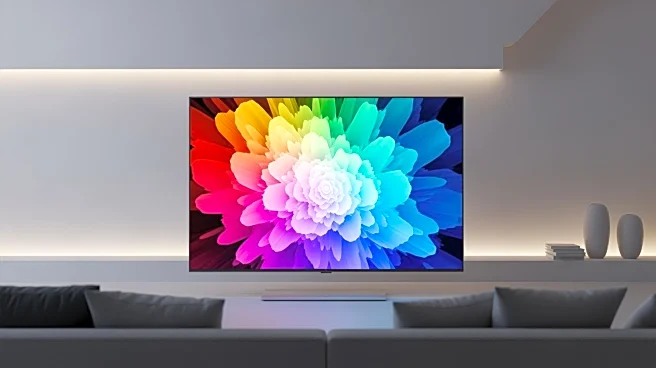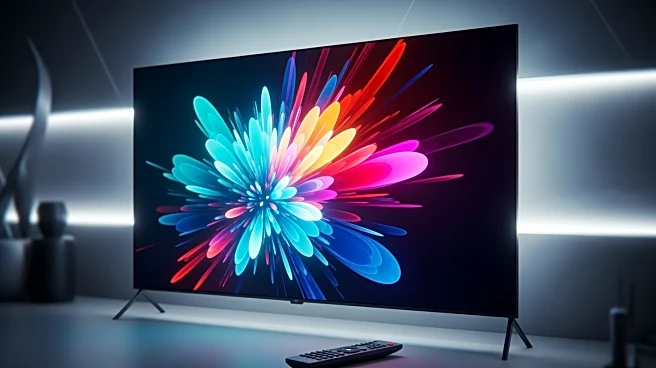What's Happening?
Comics publishers are increasingly turning to innovative writers and artists to create media tie-ins that elevate source material and attract diverse audiences. This trend is exemplified by Boom! Studios'
Adventure Time comics, which have showcased emerging talent and sold over 100,000 units this year. Oni Press has revived the Adventure Time tie-in with a series relaunch, miniseries, and specials by rising star creators. Similarly, IDW has revitalized the Teenage Mutant Ninja Turtles franchise with offbeat creators and is now focusing on its Godzilla license. Skybound's Lego Ninjago graphic novel is another example of publishers seeking unexpected voices to expand on a brand. These efforts reflect a broader industry shift towards creative license in media tie-ins, allowing for unique storytelling and artistic expression.
Why It's Important?
The shift towards creative media tie-ins in the comics industry is significant as it broadens the appeal of established franchises and attracts new audiences. By engaging diverse creators, publishers can offer fresh perspectives and innovative storytelling, enhancing the cultural relevance of these properties. This approach not only revitalizes existing franchises but also provides opportunities for emerging talent to gain exposure and build their careers. The success of these tie-ins can lead to increased sales and expanded fan bases, benefiting both publishers and creators. Additionally, this trend reflects a growing demand for quality content that resonates with a wide range of demographics, from young fans to seasoned enthusiasts.
What's Next?
As publishers continue to explore creative media tie-ins, they may face challenges in balancing artistic freedom with licensor restrictions. Building trust with licensors is crucial to creating an environment where artists and writers can thrive. Successful collaborations could lead to more freedom in introducing new characters and storylines, as seen with Disney's The Sword in the Stone project. Publishers may also leverage the success of these tie-ins to expand their portfolios and attract new talent. The ongoing evolution of media tie-ins is likely to influence the broader comics industry, encouraging more innovative approaches to storytelling and audience engagement.
Beyond the Headlines
The trend towards creative media tie-ins in comics has deeper implications for the industry, including ethical considerations around intellectual property and artistic expression. As publishers navigate licensor restrictions, they must balance the need for creative freedom with respect for established franchises. This dynamic can foster a collaborative environment where creators feel empowered to explore new ideas while honoring the source material. Additionally, the infusion of diverse voices into media tie-ins can contribute to a more inclusive and representative comics landscape, reflecting broader societal shifts towards diversity and inclusion.











